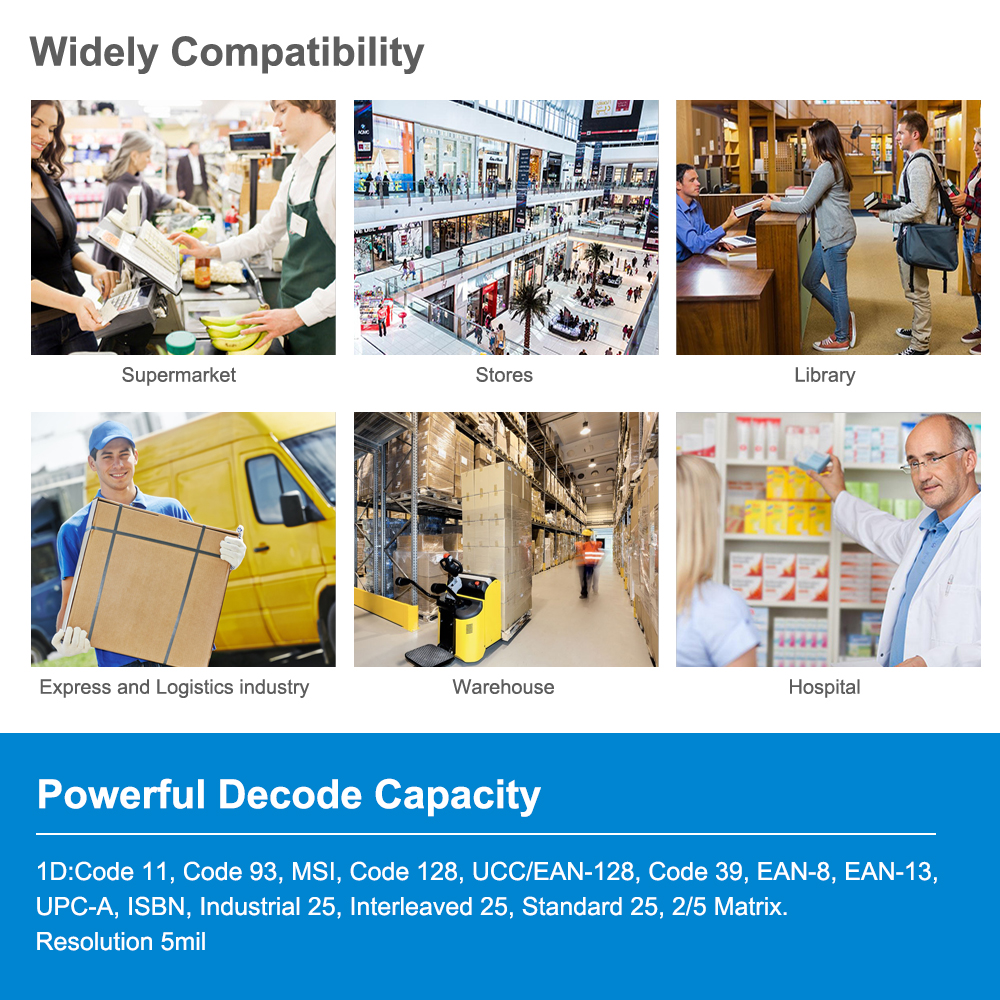As digitalization sweeps the globe, barcode readers, as a key tool for information collection, are profoundly transforming the operations of various industries. These devices, which use optical recognition technology to read barcode information, are fast and accurate, becoming a crucial bridge between the physical world and digital systems. From large supermarkets to small convenience stores, from logistics warehouses to hospital pharmacies, barcode readers are ubiquitous, providing efficient and convenient solutions for modern management.
The core function of a barcode reader is to instantly capture and convert information. A barcode reader uses a laser or camera to capture the barcode pattern. A built-in decoding algorithm converts the optical signal into digital information, which is then transmitted to the terminal system. Compared to manual data entry, barcode readers can scan at speeds of several times per second, with an error rate as low as one in a million, far lower than the one in three hundredths of manual data entry. This feature fundamentally addresses the inefficiency and error-proneness of traditional data entry, providing accurate data support for various business processes.
The advantages of barcode readers are particularly prominent in the retail and supermarket sectors. Checkout barcode scanning reduces transaction times to just seconds, significantly reducing customers' anxiety about waiting in line. During inventory checks, store clerks scan shelf by shelf with handheld scanners, verifying the quantity of thousands of items within half a day and providing timely insight into inventory dynamics. After a supermarket chain introduced barcode readers for inventory checks, inventory efficiency increased by 80%, out-of-stock rates decreased by 30%, and supply chain management was effectively optimized.
Barcode readers have significantly improved the logistics and warehousing industry. Parcel sorting processes now automatically identify destinations through barcode scanning, increasing sorting efficiency severalfold. Large transfer stations can now handle millions of packages daily. In warehouse management, barcode readers record incoming, outgoing, and relocation operations, synchronizing them with the system in real time, enabling visual tracking of the entire process. Goods that once took hours to locate can now be found in minutes through barcode scanning, significantly improving warehouse turnover efficiency.
The healthcare sector is leveraging barcode readers to strengthen its security. When a pharmacy dispenses medication by scanning a barcode, the system automatically compares the prescription with the drug information, minimizing the risk of mismatches. A barcode reader scans a patient's wristband to quickly retrieve medical records, examination reports, and medication history, reducing manual verification time. Scanning and tracking the entire process of specimen collection and reporting ensures accurate information at every step. After implementing barcode scanning management, a tertiary hospital saw a 60% decrease in medical errors and a significant increase in patient satisfaction.
Technically, barcode readers demonstrate strong adaptability. They support multiple encoding schemes, including EAN-13, UPC, and Code 128, and seamlessly integrate with various management systems, including ERP and WMS. A wide range of device forms, including handheld wireless, fixed-mount, and Bluetooth-enabled portable, cater to diverse operational needs. Their simple operation allows ordinary staff to quickly integrate into existing workflows without specialized training.
Cost advantages are a key driver of the widespread adoption of barcode readers. Barcode labels can be printed directly on packaging, costing less than a penny per piece. A wide range of reader devices are available, ranging from mobile scanning apps costing just a few dozen yuan to industrial-grade equipment costing several thousand yuan, catering to budgets of all sizes. This low-cost, high-return approach makes it a cost-effective option for modern enterprises' digital transformation, continuously driving efficiency improvements across various industries.


